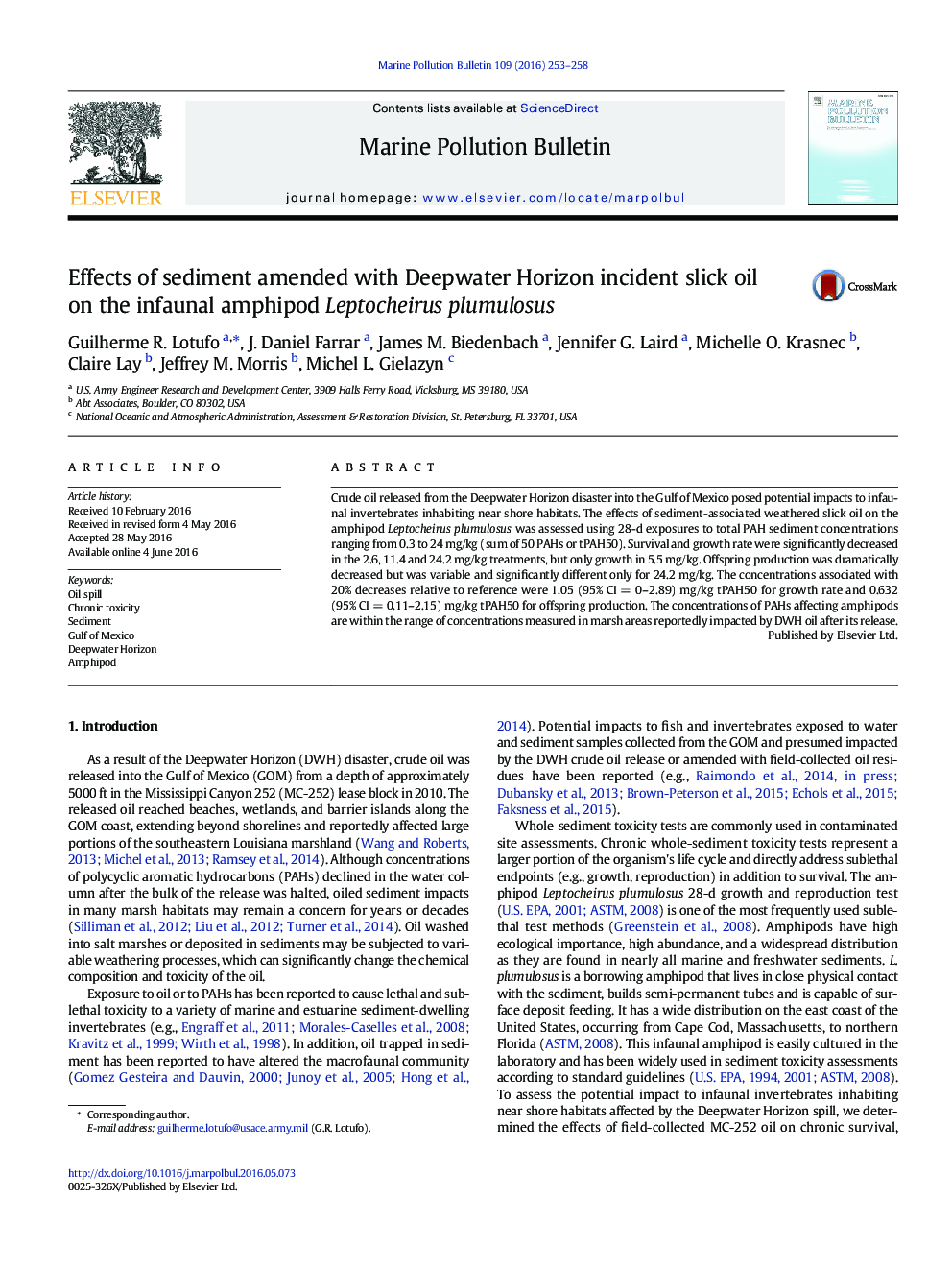| Article ID | Journal | Published Year | Pages | File Type |
|---|---|---|---|---|
| 4476399 | Marine Pollution Bulletin | 2016 | 6 Pages |
•Amphipods exposed to sediment mixed with oil from the Deepwater Horizon (DWH) spill.•28-d exposures assessed effects on survival, growth and reproduction.•Growth was significantly reduced at 2.6 mg/kg total PAHs and higher concentrations.•The concentrations associated with a 20% decrease in reproduction was 0.632 mg/kg total PAHs.
Crude oil released from the Deepwater Horizon disaster into the Gulf of Mexico posed potential impacts to infaunal invertebrates inhabiting near shore habitats. The effects of sediment-associated weathered slick oil on the amphipod Leptocheirus plumulosus was assessed using 28-d exposures to total PAH sediment concentrations ranging from 0.3 to 24 mg/kg (sum of 50 PAHs or tPAH50). Survival and growth rate were significantly decreased in the 2.6, 11.4 and 24.2 mg/kg treatments, but only growth in 5.5 mg/kg. Offspring production was dramatically decreased but was variable and significantly different only for 24.2 mg/kg. The concentrations associated with 20% decreases relative to reference were 1.05 (95% CI = 0–2.89) mg/kg tPAH50 for growth rate and 0.632 (95% CI = 0.11–2.15) mg/kg tPAH50 for offspring production. The concentrations of PAHs affecting amphipods are within the range of concentrations measured in marsh areas reportedly impacted by DWH oil after its release.
